- Bermuda vs St Augustine Grass: Which Is Right For You? - March 15, 2021
- How to Fix Yellow Grass: Top Tricks and Ideas You Must Know - March 14, 2021
- Best Soil Test Kits – 7 Top Picks to Get the Job Done - December 16, 2020
It’s no secret that lawns are a lot of work. The Chicago Tribune reports that the average American household will spend up to 70 hours caring for their lawns and gardens. So you can just imagine how disheartening it is to find yellow patches on your lawn.
If the grass is turning yellow, it might have something to do with the soil nutrients, the changing of the season, or diseases. The good thing is that you can quickly correct grass that is turning yellow.
There are many different reasons why the grass on your lawn turns yellow, and it is essential to know why they are yellowing so that you can remedy the situation correctly. Read on and find out the many reasons why the grass on your lawn is turning yellow and how you can fix it to create the perfect lawn.
Too Much Nitrogen
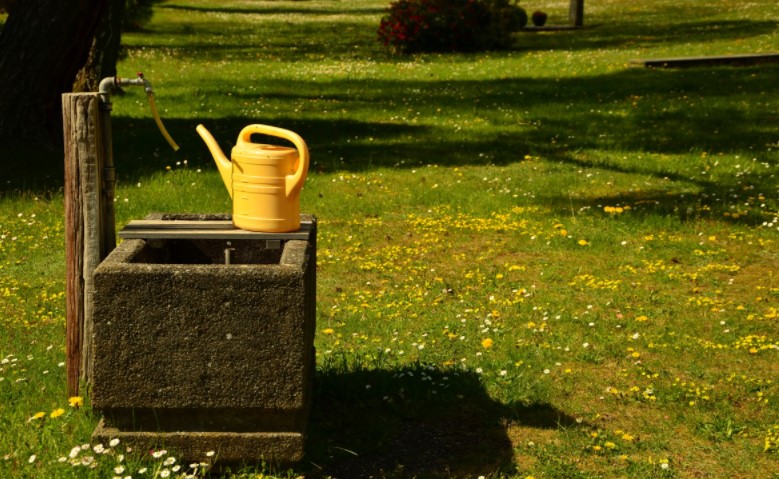
According to this page, nitrogen is a vital nutrient for plants. Nitrogen represents around three to four percent of what you see above the ground. Other nutrients that you find in such high levels are oxygen, carbon, and hydrogen, which are not usually necessary to make the soil fertile.
Nitrogen is present in almost all fertilizers, and this is because:
- This nutrient is an essential component of chlorophyll, that green pigment that the plant uses to produce its food from water and carbon dioxide.
- Nitrogen is present in amino acids, which make up proteins that the plants need to live.
- As such, nitrogen is also vital in the formation of structural units and enzymes that plants have.
- The nutrient is also an important component of nucleic acids, which allows plants to reproduce and grow.
So What Happens When Your Grass Has Too Much Nitrogen?
Several things can happen to your grass if there is too much nitrogen in the soil. For one, the grasses may grow excessively and fast. As a result, the roots are not that extensive, and it may not be able to keep up with the thicker grass above ground.
In the long run, the roots will not be able to provide water and nutrients to the grass. Moreover, too much nitrogen can burn the leaf tissue and may cause your grass to turn yellow and die.
What You Should Do
The best way to deal with yellow lawns caused by too much nitrogen is to avoid putting too much of this nutrient in the first place. And if you have to feed your lawn with nitrogen, use those that come from organic sources.
Microorganisms work to break down organic matter in the soil, and one of the by-products of decomposition is nitrogen. Manure, compost tea, guano, fish meal, sewer sludge are prime examples of organic sources of nitrogen.
The thing with these organic materials being decomposed is that microorganisms often take a lot of time in breaking them down, so there is minimal risk of your grass getting burned or yellowing. These nitrogen sources also help make the soil healthier.
Conversely, avoid using ammonium nitrate, ammonium sulfate, and calcium nitrate. Not only are these water-soluble, which makes nitrogen readily available when you water your lawn. That means that there is a high risk that you’d be supplying the grass with too much nitrogen.
Further, inorganic nitrogen sources, as well as synthetic nitrogen, can seep into the groundwater. This action can cause your groundwater to be contaminated.
Repairing a Lawn with Too Much Fertilizer
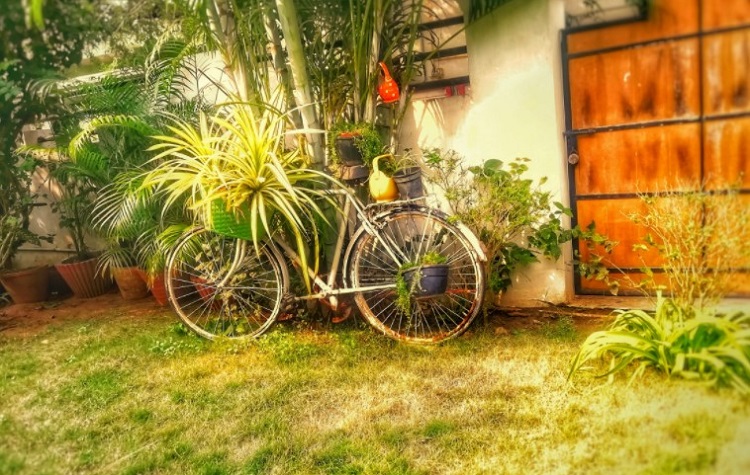
Aside from upping the nitrogen in your lawn, fertilizer can also introduce higher salt levels in the soil. The added salt can change the pH of your soil. The higher salt concentration in the soil also disrupts how the grass is taking up nutrients. Instead of water and nutrients getting into the grass, the reverse happens: water is drawn out of the plant and goes into the soil.
What can you do when your grass turns green because of applying too much fertilizer? Get a sprinkler and attach it to your garden hose.
Turn on the sprinklers and make sure that the affected area gets drenched. After that, you can let the water drain so that the excess fertilizer gets washed away or leached into the ground. Continue doing this, adding about an inch (2.5 centimeters) of water every day for a week.
If the grass dies, be sure to remove the topmost part of the soil and discard it. Two to three inches (5.1 to 7.6 centimeters) should be enough to get rid of the overfertilized soil.
Cover the now bald areas and tamp them down gently. Ensure that you add around 0.25 to 0.5 inches (6.4 to 12.7 millimeters) more soil than the surrounding areas—plant grass seeds in these newly augmented places.
Water the newly planted seeds with up to six inches (15.2 centimeters) of water. Continue to water daily until the seed starts to germinate.
Tips
- Apply the fertilizer by closely adhering to the manufacturer’s instructions.
- Suppose you notice that your grass is getting distressed and yellowing, be sure to water, which will help wash away the excess fertilizer while pushing the salt further down into the soil away from the roots.
- When watering newly planted grass seeds, take care not to water too much that it becomes soggy.
Too Much Nitrogen on You Lawn: Other Causes
Fertilizer is not the only culprit for having too much nitrogen. Dog urine also has high nitrogen levels that can cause burns. These yellowing patches are surrounded by green grass.
Lack of Nitrogen
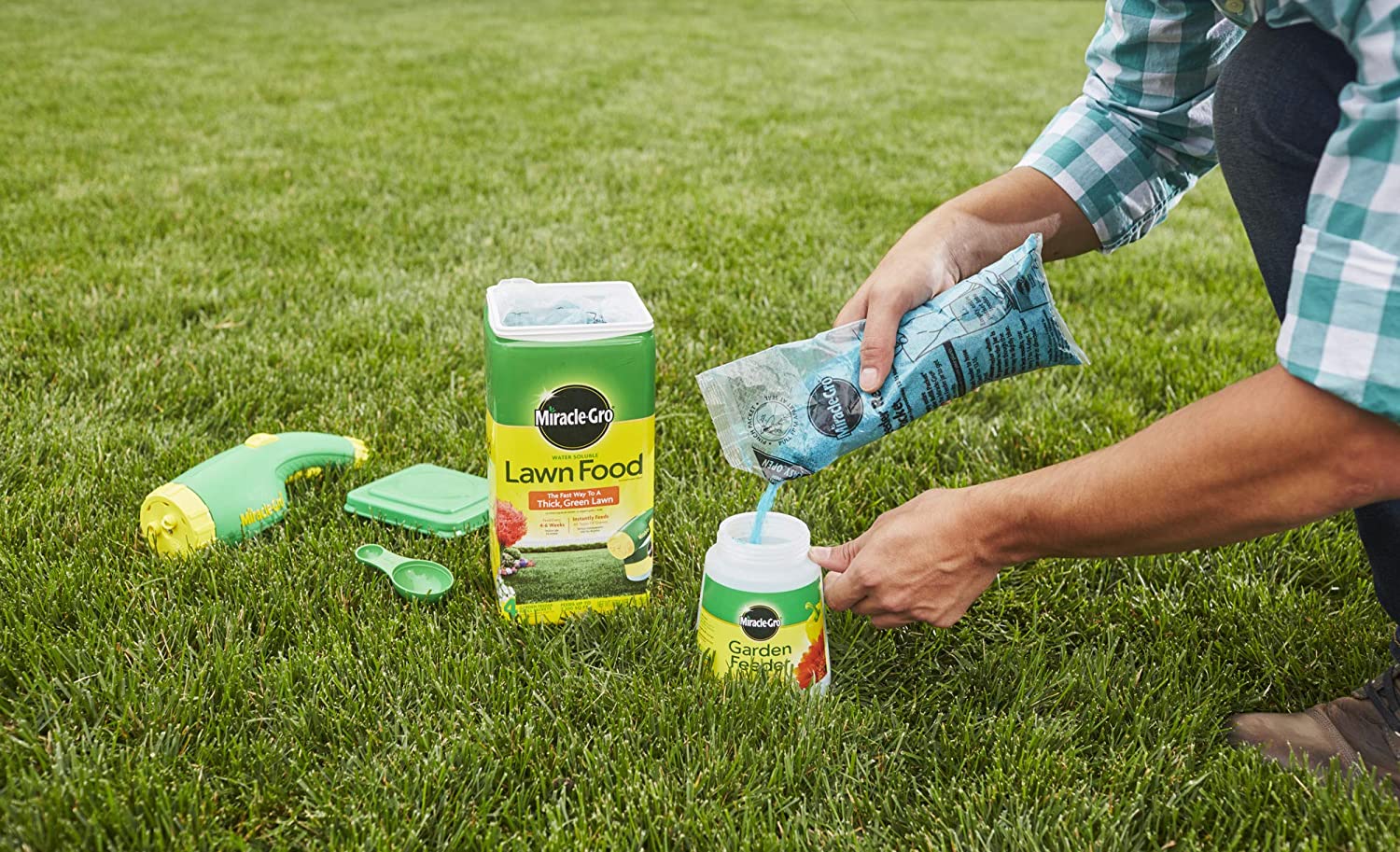
Like having too much nitrogen, the lack of this nutrient can also cause your lawn to go yellow. Because nitrogen is responsible for healthy and lush leaves and greens, this nutrient deficiency means that your grasses will not have the right shade of green and may even yellow over time.
If this is what’s happening to your grass, then apply a fertilizer that is rich in nitrogen. Get something like the Miracle-Grow Water Soluble Lawn Food or the Scotts Turf Builder Thick’R Lawn.
Iron Deficiency
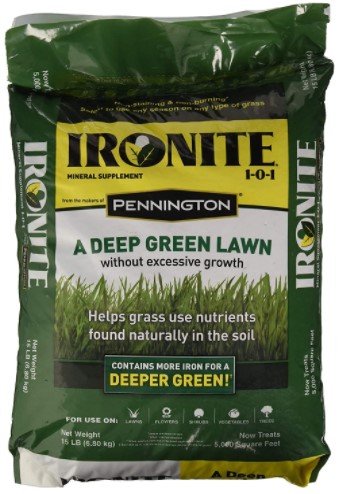
Another nutrient that helps keep your lawn green is iron. A lack of iron can lead to lime chlorosis or iron chlorosis. The thing is, iron is used to create chlorophyll. Be sure that you correct this immediately with a product such as the Ironite 100519460 1-0-1 Mineral Supplement and Fertilizer.
Severe iron chlorosis can kill your lawn. Milder cases can lead to yellowing grass or lead to other growth problems.
Too Much Sunlight and Heat
While most grasses love the full sun, there are times when it’s sweltering and dry. This type of climate can make the water in the soil evaporate a lot faster and stress the grass.
When your grass is exposed to too much sunlight, the excess energy can trigger the overproduction of reactive types of oxygen that can destroy the plant. Fortunately, watering your lawn deeply and more frequently can correct this problem.
Too Little Light
This experiment shows that there are several ways that light can affect the color of your grass. When your grass is not getting enough sunlight, photosynthesis production slows and eventually turns yellow. This action is caused by the slowdown in chlorophyll production, which makes other pigments more visible.
If your lawn is getting too little light because of surrounding trees, you can cut back the trees. Doing so will allow more sunlight to reach the grass.
If there are obstructions in the area giving your grass too much shade, consider taking them down or moving them.
Compacted Soil
If the grass turns green in areas that get a lot of foot traffic, the problem might be compacted soil. Walking, running, or even parking your cars over the grass can cause the ground to get squeezed. This situation results in the roots not getting enough water, which is why your grass is drying out, turning yellow, and in some cases, wilt and die.
Compacted soil is easily corrected by aeration. When you aerate the earth, you punch holes into the ground, allowing the soil to loosen up.
Diseases and Pests
Fairy Rings
Fairy rings are caused by basidiomycetes, fungi that live in the soil. The fungi help decompose the organic matter in the ground, releasing nutrients that make the grass green.
Fairy rings get their name because of the dark green circles where the grass is greener because more nitrogen is available. Mushrooms often dot the edges of these rings.
This disease usually grows in size. The dark green circles move out at a rate of six to 24 inches (61.0 centimeters) a year, depending on the weather conditions, soil type, and grass type that you grow. Fairy rings like sandy soils that are well-draining and less fertile.
Different Symptoms of Fairy Rings
Because of a wide variety of fungus involved, fairy rings often have different symptoms. There are three types of fairy rings:
- Type I: The ring is composed of wilted or dead grass, which turns brown
- Type II: The ring has dark green grass
- Type III: The ring is dotted with puffballs or mushrooms
What to Do to Get Rid of Fairy Rings
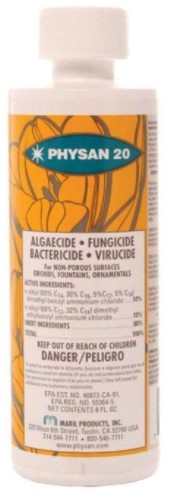
You can use a product like Hydrofarm Physan PSPTA20 Algaecide, Fungicide, Bactericide, and Virucide to help control fairy rings. But if you don’t like to use any more chemicals in your garden, you can also:
- 1. Aerate the soil and remove thicker thatch.
- 2. Aerate your lawns.
- 3. Introduce beneficial soil microbes by adding humus, manure, or compost.
- 4. Rake or mow your lawn to get rid of the mushrooms.
This video about fairy rings will explain how it looks and some things you can try to get rid of.
Snow Mold
Snow mold happens during the winter when a layer of snow rests on top of your grass. You won’t see it until everything thaws out in the spring.
Snow mold is caused by fungi and can be very unsightly. But more than just the bad appearance that it gives your lawn, it can also kill the grass.
There are two main types of this fungi that you can see. Gray snow mold is characterized by dead patches that have a whitish or gray look.
Gray snow mold can be anywhere from a few inches in diameter to a few feet. On the other hand, Pink snow mold manifests itself in round dead patches of grass with rust or pink borders.
Getting Rid of Snow Mold
To remedy lawns with snow mold, you should dethatch your lawn. Thatch holds moisture in, which snow mold loves. If you have dead grass because of snow mold, overseed them.
This video will explain what snow mold is and what you can do about it.
Fusarium Patch Disease
Fusarium patch disease results in yellow and brown patches on your lawn. What’s more, the grass does not hold any moisture or dew in the early mornings. A cobweb-like network of white mold can also develop, and it may look like your grass has cotton wool on them.
This disease often affects lawns during autumn and throughout the winter. It is most likely caused by:
- Overcast skies leading to lower light
- Reduced daylight
- Morning mists that stay longer
- Reduced air movement
- Warmer than expected temperatures overnight
Fusarium patch disease like freshly laid turf because the grass is stressed by the mowing or new grass. The bad news is that you can buy fumigants to fight fusarium, but they usually require professional applications.
Dollar Spot
A turf disease, dollar spot is characterized by discolored grass that is, as the name suggests, as big as a dollar coin. The grass will have red or brown edges with straw-colored lesions, as well.
Dollar spot diseases can happen when your lawns have extra moisture, usually when days are warm but nights are cool. Suitable conditions also include poorly draining soil, too much thatch, or overwatering.
Like other diseases that we have mentioned, the dollar spot is also caused by fungi. This video will show you how to treat dollar spot disease:
Rounding It Up: How to Diagnose What’s Wrong When the Grass Turns Yellow

The first suspect you should rule out when your lawn’s grass turns yellow is problems with the soil. It can easily be nitrogen or iron deficiency. But you can have a better idea of what’s wrong by testing your soil with products such as Soil Savvy – Soil Test Kit.
If your soil lacks nitrogen or iron, it can result in yellowing grass. As noted above, these nutrients are essential for the green grass in that they help develop chlorophyll and make your lawn healthier.
Solving Iron Deficiency
Nitrogen deficiency is easy to correct, as most fertilizers have readily available nitrogen in their formulation.
With iron, you will need to add compost. Or you can dilute two ounces (56.7 grams) of iron sulfate in three to five gallons (11.4 to 18.9 liters) of water and irrigate your lawn.
Seasonal Stress
Maintaining your lawn and keeping it healthy is a year-long thing. But a change in the seasons can bring a variety of challenges and can lead to yellowing grass.
Warm-season grass can die during cold winters, and cold-season grass may be sensitive to temperature fluctuations. What’s more, there are times when you should cut the grass low, such as during the first days of spring. Otherwise, scalping your lawn may leave you with brown or yellow grass.
When there are heavy rains, the grass might grow faster than the root system. The weak roots will make it more difficult for your lawn to get the nutrients it needs from the soil to feed itself.
So Remember, When Cutting Grass…
Avoid cutting more than one-third of a grass blade after mowing your lawn low at the start of spring. How low should you cut your grass? The answer will vary depending on the grass type that you have, according to the DIY Network.
- Bahia: 2.5 to 4 inches (6.4 to 10.2 centimeters)
- Bermuda: 0.5 to 2.5 inches (1.3 to 6.4 centimeters)
- Buffalo: 1.5 to 4 inches (3.8 to 10.2 centimeters)
- Centipede: 1 to 2.5 inches (2.5 to 6.4 centimeters)
- Fine fescue: Cut around 1.5 to 4 inches (3.8 to 10.2 centimeters)
- Kikuyu grass: 1 to 1.5 inches (2.5 to 3.8 centimeters)
- Kentucky bluegrass: Cutting height of 0.75 to 3.5 inches (1.9 to 8.9 centimeters)
- Perennial ryegrass: Around 0.75 to 2.5 inches (1.9 to 6.4 centimeters)
- St. Augustine: 1 to 3 inches (2.5 to 7.6 centimeters)
- Tall fescue: 1.5 to 4 inches (3.8 to 10.2 centimeters)
- Zoysia: 0.5 to 3 inches (1.3 to 7.6 centimeters)
You may also contact the local county extension office, sod and seed retailers, or a garden center to get a better idea of cutting heights in your area.
Generally, however, you will want to let your grass grow taller when the temperatures are hot, like in the summer. You will also want to mow warm-season grass shorter in the spring to remove the dead grass blades from your lawn.
In contrast, you should mow cool-season grass short during autumn so that it doesn’t develop snow mold. Finally, you will need to let grass that is not getting a lot of sunlight grow taller.
Fungi
Another cause for yellowing or dead grass is fungi. You can prevent fungi from attacking your lawn by properly maintaining it. If fungi do show up, a good fungicide will be able to help.
Other Reasons Why Your Grass Turn Yellow
Aside from the most common reasons, there are also other causes of yellow grass:
- Dog urine
- Spilled chemicals
- Weak root systems
What You Can Do
If you spill chemicals, or if dog urine is starting to ruin the grass, you should soak the yellowing area with water or water with a bit of dish soap. The soaking will help dilute the urine and the chemicals and wash it off your grass.
Good soaking is also needed if you have suddenly overfertilized your grass. Further, do not mow your lawn too short. As a last resort, you need to re-sod or reseed your lawn if the damage is too extensive or severe.
Avoiding Yellow Grass in the First Place
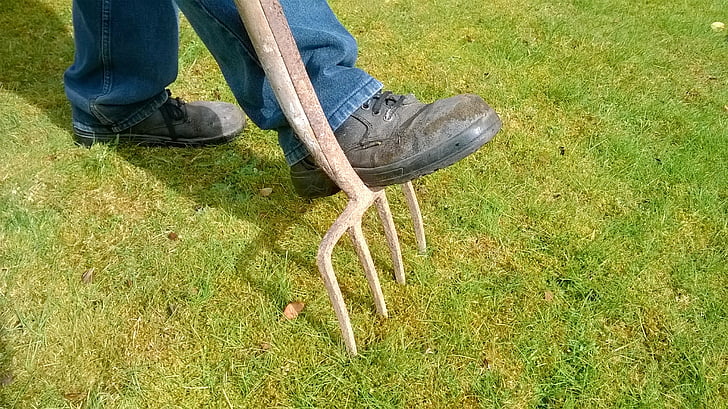
Now that you know what causes your lawn to turn yellow, as well as how to remedy it, you will still want to avoid the problem in the first place. So how do you do that?
- Prune trees that are blocking sunlight from reaching the grass on your lawn. If that’s not possible, let the grass in shady areas grow taller than the rest of your lawn.
- Use sharp blades for your mower. According to this page, a dull mower blade will rip the grass and leave jagged edges that can invite disease and pests. On the other hand, a sharp blade will give it a clean-cut and allows it to heal faster.
- Never mow the grass you have if the grass is wet. Again, this is to avoid diseases and making sure your grass gets a clean cut.
- Make sure that your lawn has good drainage. Soggy or wet soil can invite pests and fungi.
- Avoid leaving grass clippings or fallen leaves on your lawn if you have problems with fungi, diseases, and pests.
- Water your lawn deeply, preferably in the morning, so that the grass has enough time to dry.
- Fertilize according to the manufacturer’s instructions.
- Kill weeds that may compete with your grass for nutrients.
FAQs
Answer: Dog and cat urine has nitrogen in it, and just like fertilizers, it can burn the grass. Whenever possible, train your dogs not to pee on your lawn. Instead, give them an area of your garden that they can go to when they have to go.
Answer: When the soil is compacted, you will need to aerate it. There are two types of tools that you can use: plug aerator and spike aerator. Spike aerators punch holes into the soil and work in the same way as striking the ground with a garden fork.
Plug aerators do much more; they remove a plug of grass and soil from your lawns. To aerate your lawn properly, you will want to use a plug aerator tool to avoid getting the soil in between the holes made by spike aerators more compact.
Before you start, you should moisten the soil to make it easier to aerate it. Make several passes with your plug aerator to make sure that you aerate the entire area. To save time, you don’t need to worry about the places around your yards that don’t have compacted soil.
The removed plugs should be allowed to dry up, and then run a lawn mover over these plugs to spread them out evenly. Doing so will give your lawn a more uniform look.
Answer: There are many upsides to having a healthy lawn. For one, you will not have to put up with the unsightly yellowed grass. It also helps your grass be more diseases resistant.
But what are the best practices to keep your grass green and healthy?
• Don’t cut your grass too short. Also, avoid snipping more than a third of your grass’s current height when you’re clipping.
• Always collect clippings and dead leaves to avoid giving fungi an ideal growing condition. You can use these clippings as mulch.
• Don’t forget to water your lawn when it gets dry. It’s recommended to give the grass around one to 1.5 inches (2.5 to 3.8 centimeters) of water every week, more during the warmer summer months. Be sure to water deeply.
• Always sharpen your mower blade.
• Aerate your lawn.
• Change up your mowing pattern. Taking another route when cutting the grass will help give your lawn a more uniform look.
Fix That Yellow Grass Today
If you are taking proper care of your lawn, you will probably not have much of a problem when it comes to yellowing grass. Preventing yellow patches of grass comes from spending a few hours every month making sure that your lawn is green.
Yellow grass is unsightly, but thankfully, it is effortless to fix now that you know what to do.

